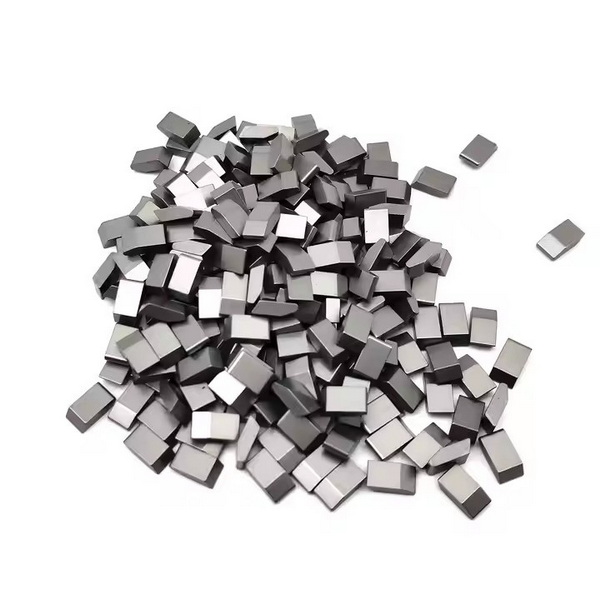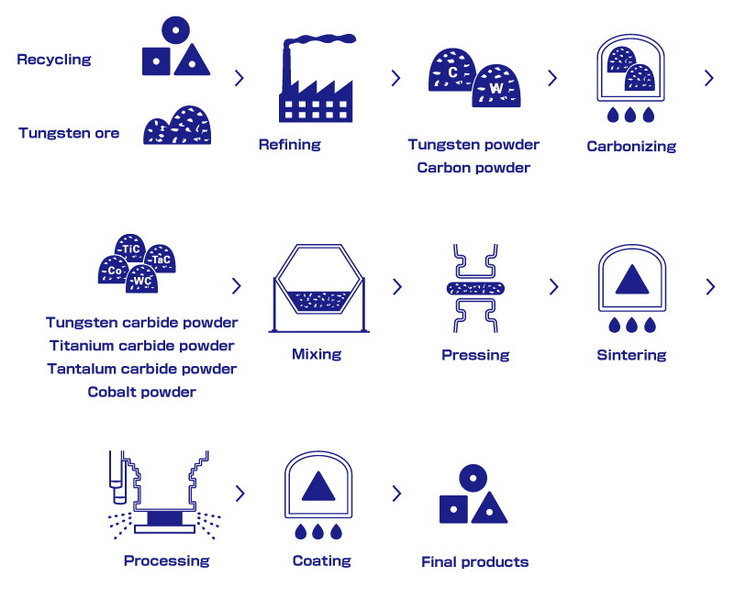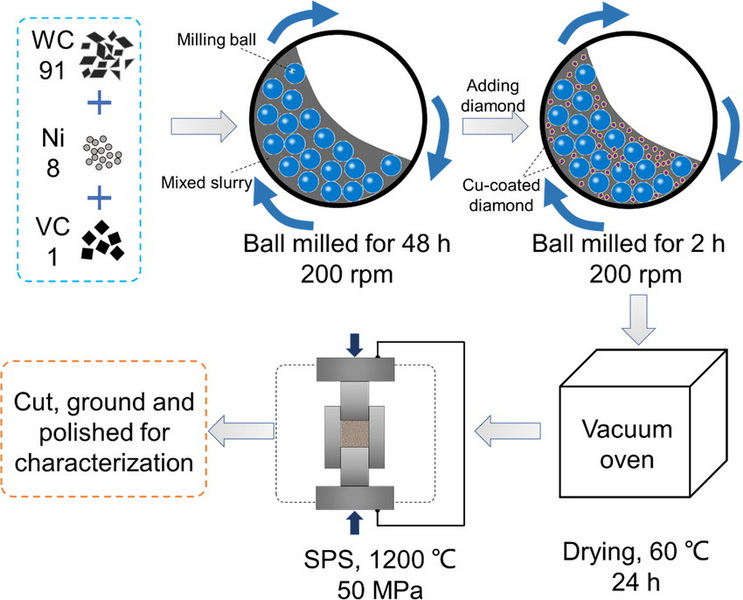Content Menu
● Introduction to Tungsten Carbide
>> Raw Materials
● Manufacturing Process
● Advanced Machining Techniques
● Applications of Tungsten Carbide Products
● Advanced Manufacturing Techniques
>> Additive Manufacturing Process
>> Benefits of Additive Manufacturing
● Tungsten Carbide Coating Technology
● Recycling of Tungsten Carbide
>> Electrolytic Method
>> Zinc Smelting Method
● Sustainability in the Carbide Industry
● Conclusion
● Frequently Asked Questions
>> 1. What is Tungsten Carbide?
>> 2. How is Tungsten Carbide Manufactured?
>> 3. What are the Key Applications of Tungsten Carbide?
>> 4. Can Tungsten Carbide be Recycled?
>> 5. What are the Benefits of Using Tungsten Carbide in Industrial Applications?
● Citations:
Tungsten carbide, known for its exceptional hardness and wear resistance, is a crucial material in the production of carbide industrial products. These products are widely used in various industries, including manufacturing, mining, aerospace, and automotive sectors. The manufacturing process of tungsten carbide involves several complex steps, from raw material selection to final product shaping. In this article, we will delve into the detailed process of how tungsten carbide products are manufactured.

Introduction to Tungsten Carbide
Tungsten carbide is a compound made from tungsten and carbon atoms, with a chemical formula of WC. It is renowned for its hardness, which is comparable to diamond, making it ideal for applications requiring high wear resistance and precision. Tungsten carbide products are often combined with a binder material, such as cobalt or nickel, to enhance their toughness and workability.
Raw Materials
The primary raw materials for producing tungsten carbide are tungsten ore and carbon sources. Tungsten ore is processed into tungsten oxide, which is then reduced to tungsten metal powder in a hydrogen atmosphere. Carbon is typically sourced from high-purity carbon black or graphite. The quality of these raw materials significantly affects the final product's performance.
Manufacturing Process
The manufacturing process of tungsten carbide products involves several key steps:
1. Material Mixing: Tungsten powder is mixed with carbon black in a ball mill for 2-4 hours to ensure uniformity. This step is crucial as it affects the quality of the final product. The mixture must consider not only the carbon needed for carburization but also the carbon required for the reaction between carbon and oxygen in the powder.
2. Carburization: The tungsten-carbon mixture is heated in a graphite carbon tube furnace at high temperatures (typically between 1300°C to 1600°C) to form tungsten carbide. The exact temperature depends on the desired particle size of the final product. Different temperatures affect the grain size and hardness of the resulting tungsten carbide[1].
3. Grinding and Sieving: After carburization, the tungsten carbide is ground into a fine powder and sieved to achieve uniform particle sizes. Fine particles are typically sieved through a 200-mesh sieve, while coarse particles use a 60-mesh sieve. This ensures that the powder is suitable for subsequent processes[1].
4. Mixing with Binder: The tungsten carbide powder is mixed with a binder material, such as cobalt, to enhance its toughness and workability. This mixture is crucial for creating a strong and durable product. The proportion of the binder affects the overall properties of the final carbide industrial products[1].
5. Compaction: The mixture is pressed into the desired shape using high-pressure machinery. This creates a "green compact" that is fragile but has the intended shape. Techniques such as cold isostatic pressing (CIP) or uniaxial pressing are commonly used[1].
6. Sintering: The green compact is heated in a vacuum furnace at high temperatures (typically around 1500°C) to fuse the particles together, resulting in a solid and dense carbide structure. Sintering is critical for achieving the desired density and mechanical properties[1].
7. Final Shaping and Grinding: The sintered product is then shaped and ground to achieve the desired dimensions and surface finish. Techniques such as CNC machining and EDM machining are used for precise shaping[1].
Advanced Machining Techniques
Once the basic shape is sintered, further refinement is achieved through various cutting and grinding methods[1]:
- Fast Wire EDM Cutting: This initial step involves using wire electrical discharge machining (EDM) to cut the tungsten steel material into a rough shape and size. It's an effective method for coarse shaping[1].
- Medium Wire Cutting: Following rough cutting, medium wire cutting is employed for finer detailing, enhancing the shape precision of the tungsten carbide parts[1].
- Grinding Processes: Grinding is crucial for achieving the final dimensions and surface qualities required[1]:
- Surface Grinding: This is primarily used for processing flat surfaces, ensuring control over surface parallelism and perpendicularity[1].
- Cylindrical Grinding: Including internal, external, and both combined, cylindrical grinding focuses on processing circular parts to maintain concentricity[1].
- PG Profile Grinding: This specialized grinding method is used for curved surfaces and precise machining of carbide tips, adhering to specific programmed grinding patterns[1].
- CNC Machining: Post-grinding, CNC machining refines the parts to their final dimensions, particularly after quenching treatments that might cause subtle deformations. CNC machining centers offer high efficiency despite the high costs associated with the equipment[1].
- CNC Turning: CNC turning is crucial for machining complex surfaces, including chamfering and precise control over angles and tolerances in holes and slots[1].
- EDM Machining: For features requiring extremely tight tolerances like blind holes, EDM machining is the method of choice. Slow wire cutting, another form of EDM, is ideal for through-hole and micro-hole machining[1].
- Final Touches with Slow Wire Cutting: The manufacturing process concludes with slow wire cutting, ensuring that the final dimensions strictly align with the design requirements[1].

Applications of Tungsten Carbide Products
Tungsten carbide products are used in a wide range of industries due to their exceptional hardness and wear resistance. Some of the key applications include:
- Cutting Tools: Tungsten carbide is widely used in cutting tools such as drill bits, milling inserts, and saw blades due to its ability to maintain sharpness under high stress conditions.
- Wear-Resistant Parts: It is used in wear-resistant parts such as valve seats, pump impellers, and crusher liners to enhance durability and reduce maintenance costs.
- Aerospace and Automotive: Tungsten carbide is used in high-performance components for aerospace and automotive industries due to its strength and precision.
- Oil and Gas Production: Tungsten carbide coatings are applied to drilling equipment and production components to extend their life in abrasive environments.
- Medical Applications: Tungsten carbide is used in surgical tools and implants due to its biocompatibility and durability.
Advanced Manufacturing Techniques
In recent years, advanced techniques such as additive manufacturing have been explored for producing tungsten carbide parts. These methods allow for the creation of complex geometries and can potentially reduce production time and costs.
Additive Manufacturing Process
The additive manufacturing process for tungsten carbide involves mixing tungsten carbide particles with other carbides and a binder, then using techniques like selective laser melting to create the desired shape. This process offers flexibility in design and can produce parts with intricate details.
Benefits of Additive Manufacturing
- Complex Geometries: Allows for the creation of complex shapes that are difficult to achieve with traditional methods.
- Reduced Material Waste: Minimizes material waste by building parts layer by layer.
- Increased Speed: Can potentially reduce production time compared to traditional sintering processes.
Tungsten Carbide Coating Technology
Tungsten carbide coating technology is very popular in the aerospace industry, which can effectively deal with the wear and tear of aviation equipment[6]. A coating technology called low-temperature chemical vapor deposition (CVD) is commonly used among the most famous aviation manufacturers in Europe and the United States, which is a process for depositing tungsten carbide coatings and has been considered a practical, technical, and commercial solution[6]. It can significantly increase the life of aircraft parts and is widely used in the jet engines of three generations of aircraft such as typhoons and F16[6]. The existing coating processes include supersonic flame spraying tungsten carbide, hard chromium plating, physical vapor deposition of tungsten carbide, and explosion spraying tungsten carbide[6]. However, although these applications have been successful in some areas, they have their own limitations[6].
Recycling of Tungsten Carbide
Recycling tungsten carbide is crucial due to its extensive use in cutting and machining tools and its significant environmental and economic impact[4]. Two primary methods for recycling tungsten carbide are the Electrolytic Method and the Zinc Smelting Method[4]. Each has unique processes and applications, making them suitable for different types of waste tungsten carbide materials[4].
Electrolytic Method
The electrolytic method is an efficient process that leverages the electrode potentials of different components within tungsten-containing waste[4]. This method is particularly effective for waste materials that include tungsten carbide and cobalt metal[4].
Process Overview:
- In an acidic solution, such as one with a hydrochloric acid concentration of about 20g/L, cobalt can be selectively dissolved, or both cobalt and tungsten carbide can be simultaneously dissolved[4].
- A graphite anode and a nickel plate cathode are used, where the cobalt dissolves into the solution, forming CoCl2[4].
- Electrolysis is performed at a low voltage of 1.0-1.5V, leading to the dissolution of cobalt and the peeling off of WC from the waste[4].
- The anode mud produced is then processed (washed, ball milled, and sieved) to recover WC, which can be reused to produce new tungsten carbides[4].
Advantages:
- Low reagent and energy consumption[4].
- Simplicity of the process[4].
Limitations:
- Only applicable to waste tungsten carbide with a cobalt content above 10%[4].
Zinc Smelting Method
This method involves the use of metallic zinc and high temperatures to recover tungsten carbide from waste materials[4]. It is effective for waste tungsten carbide with low cobalt content or those containing other metals like tantalum and titanium[4].
Process Overview:
- Waste tungsten carbide blocks and metallic zinc are placed in a crucible inside a vacuum furnace[4].
- The mixture is heated to temperatures between 773 to 873 K, where cobalt reacts with molten zinc to form a zinc-cobalt alloy[4].
- At 1173 K, zinc is removed by vacuum distillation, leaving behind loose WC and cobalt powder[4].
- The recovered WC and cobalt powder are then processed (ball milled and sieved) for use in new production of tungsten carbides[4].
Advantages:
- Short production process[4].
- Capable of handling low-cobalt content waste[4].
- Recovers materials that closely match the grade of the original waste[4].
Limitations:
- Requires specific types of waste material[4].
- Complex equipment and high energy consumption[4].
- Generally, higher costs than the electrolytic method[4].
Sustainability in the Carbide Industry
The carbide industry is an important part of the metalworking industry and plays a crucial role in the manufacturing of tools, machine components, and other precision parts[7]. However, the industry also faces various challenges regarding sustainability[7]. One of the biggest challenges is the use of raw materials such as tungsten and cobalt, which are used in the production of carbides[7]. These raw materials are limited and their extraction can have environmental impacts such as energy consumption, water usage, and CO2 emissions[7]. Another problem is the disposal of carbide waste, which can often pose a burden on the environment due to its high content of heavy metals and other hazardous substances[7].
To address these challenges, many companies in the carbide industry have begun implementing more sustainable processes and practices[7]. These include using recycled raw materials, reducing waste and emissions, optimizing production processes, and promoting circular economy and resource efficiency[7]. Some companies are also turning to alternative materials such as carbides based on recycled steel or ceramics[7]. These materials have the advantage of being more environmentally friendly and requiring less raw materials[7].
Conclusion
The manufacturing of tungsten carbide products involves a complex process that requires precise control over raw material quality, mixing, carburization, and sintering conditions. The resulting products are highly valued in various industries for their exceptional hardness and wear resistance, making them indispensable for cutting tools, wear-resistant parts, and high-performance components.

Frequently Asked Questions
1. What is Tungsten Carbide?
Tungsten carbide is a compound made from tungsten and carbon atoms, known for its exceptional hardness and wear resistance. It is widely used in carbide industrial products.
2. How is Tungsten Carbide Manufactured?
Tungsten carbide is manufactured through a powder metallurgy process involving mixing tungsten powder with carbon, carburization, grinding, mixing with a binder, compaction, and sintering.
3. What are the Key Applications of Tungsten Carbide?
Tungsten carbide is used in cutting tools, wear-resistant parts, aerospace components, automotive parts, and medical applications due to its hardness and durability.
4. Can Tungsten Carbide be Recycled?
Yes, tungsten carbide can be recycled. Used tools and scrap material can be reclaimed and reused, reducing waste and conserving resources.
5. What are the Benefits of Using Tungsten Carbide in Industrial Applications?
Tungsten carbide offers extended tool life, reduced maintenance costs, improved precision, and enhanced manufacturing efficiency, making it a cost-effective choice for demanding industrial applications.
Citations:
[1] https://www.carbide-products.com/blog/how-tungsten-carbide-parts-made/
[2] https://www.coherentmarketinsights.com/industry-reports/tungsten-carbide-market
[3] https://www.tungstenmetalsgroup.com/blog-blog/tungsten-scrap-metal-recycling
[4] https://www.carbide-products.com/blog/tungsten-carbide-recycling/
[5] https://www.persistencemarketresearch.com/market-research/tungsten-carbide-powder-market.asp
[6] https://www.samaterials.com/content/how-does-the-new-tungsten-carbide-coating-strengthen-aircraft-parts.html
[7] https://grafhartmetall.com/en/sustainability-in-the-carbide-industry/
[8] https://patents.google.com/patent/EP2521799A1/en
[9] https://www.linkedin.com/pulse/tungsten-carbide-market-future-trends-solutions-industry-fib5f
[10] https://grafhartmetall.com/en/innovations-in-tungsten-carbide-coatings-swiss-expertise-revealed/
[11] https://www.uniontool.com/news/tungsten-carbide-end-mills-news-archive/
[12] https://tungstencarbide42.wordpress.com/environmental-impact-and-sustainability/
[13] https://www.itia.info/wp-content/uploads/2023/07/ITIA_Newsletter_2019_08.pdf
[14] https://www.ls-carbide.com/news/Tungsten-Carbide-Market-Outlook-An-In-depth-Analysis-of-Future-Growth-Trends.htm
[15] https://www.hit-tw.com/newsdetails.aspx?nid=298
[16] https://www.durit.com/technology/carbide
[17] https://www.mdpi.com/2071-1050/15/16/12249
[18] https://www.allied-material.co.jp/en/research-development/tungsten_recycle.html
[19] https://www.carbide-part.com/blog/comprehensive-analysis-of-tungsten-carbide-parts-characteristics-types-applications-and-future-trends/
[20] https://patents.google.com/patent/US4008090A/en
















